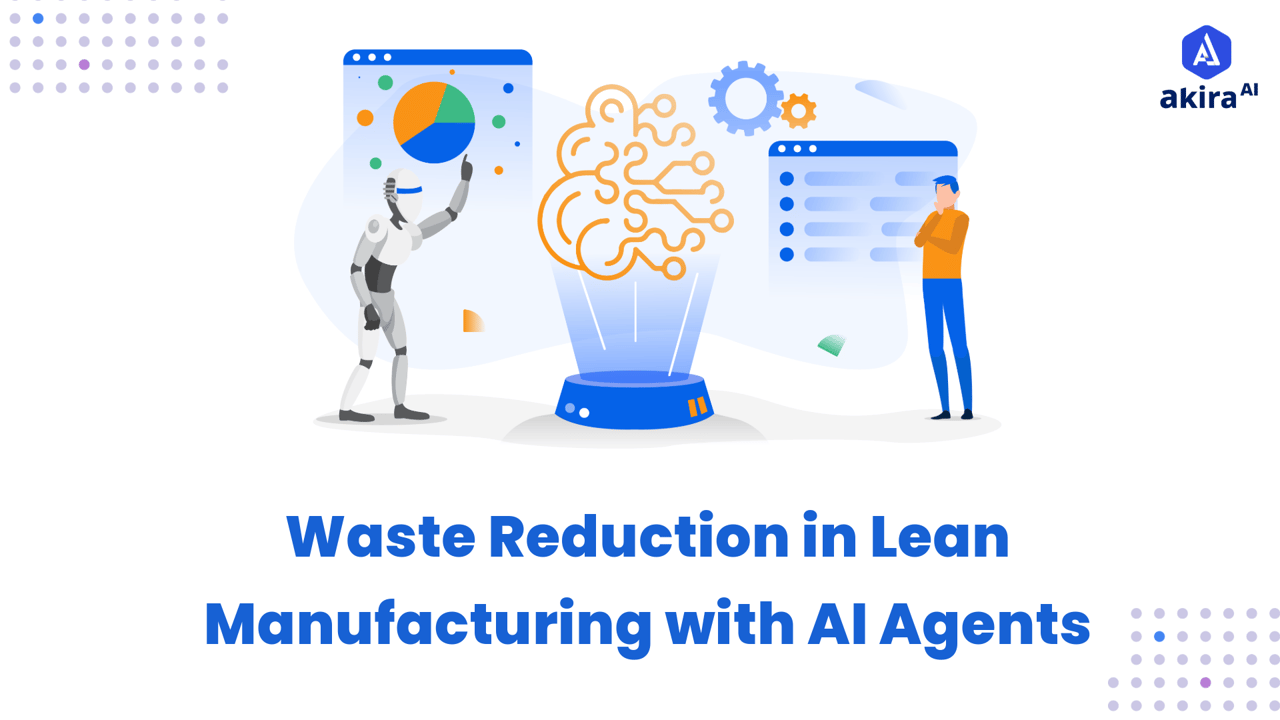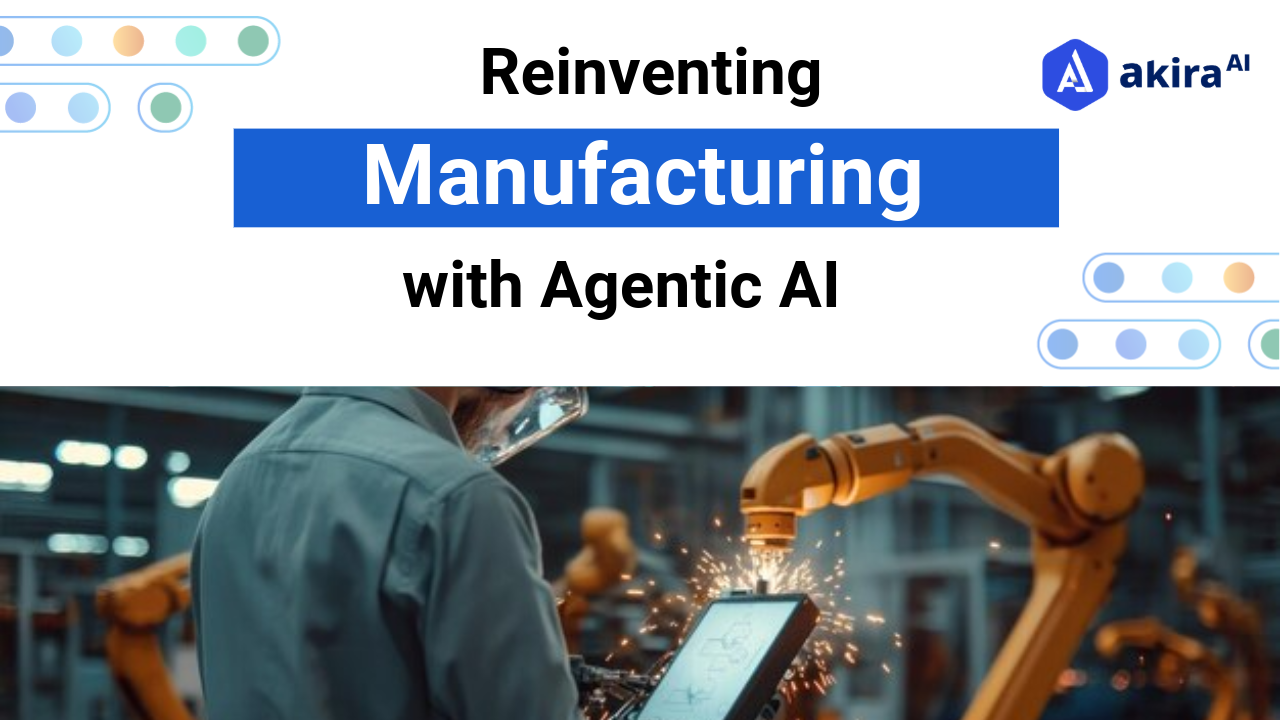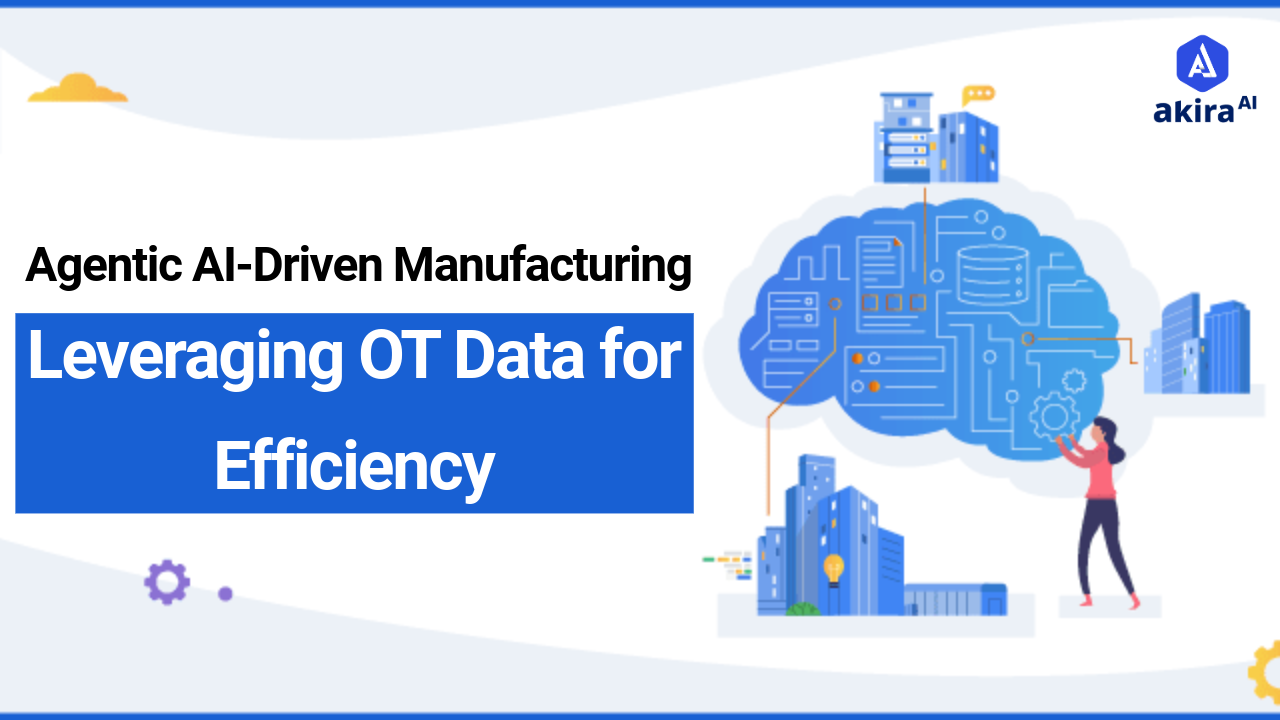Key Insights
AI agents are transforming waste reduction in lean manufacturing by providing real-time data analysis and predictive insights, optimizing production procedures to minimize waste like overproduction, excess inventory, and defective products, etc. Consistent monitoring and optimizing processes enable manufacturers to make informed decisions, ultimately enhancing operational efficiency and reducing expenses.

The landscape of modern manufacturing is evolving, making the optimization of processes and waste reduction crucial for maintaining competitiveness. Lean manufacturing has long stood as a reliable approach, focused on eliminating inefficiencies and streamlining operations. However, the integration of AI agents is opening up exciting new possibilities for achieving these goals. By leveraging intelligent systems within lean frameworks, manufacturers can boost productivity, cut costs, enhance quality, and deliver greater value to customers.
With sustainability and efficiency at the forefront of industry discussions, embracing AI technology is more important than ever. This innovative approach not only strengthens traditional lean practices but also tackles contemporary challenges effectively. Let’s dive into how Agentic AI can revolutionize lean manufacturing, driving significant advancements in waste reduction and operational excellence.
What is Lean Manufacturing?
Lean manufacturing is an approach that aims to minimize waste in manufacturing systems and increase productivity. Waste is defined as anything that customers do not find valuable and are not willing to spend money on. Originating from the Toyota Production System, lean manufacturing focuses on identifying and eliminating non-value-adding activities in the manufacturing process. This continuous improvement model uses tools like Just-in-Time (JIT), 5S methodology, and Kaizen to optimize efficiency, reduce costs, and improve overall quality.
Overview of Lean Manufacturing and its Wastes
Lean manufacturing categorizes waste into distinct types that hinder productivity and efficiency. Currently, the Lean Manufacturing framework identifies 8 different forms of waste in a business process:
-
Overproduction: It occurs when the amount of goods or output produced exceeds the amount that can be sold. This results in extra inventory piling up, which can restrict funds and storage capacity.
-
Overprocessing: Overprocessing refers to any task that is unnecessary for the creation of a working product or service. This waste involves extra or unnecessary steps in a process that utilizes resources but does not add to quality or functionality.
-
Defects: These are flaws or deviations from the specified quality standard found in products or services. A flaw leads to either the product being rejected or needing rework, both of which demand resources for correction.
-
Excessive inventory is the accumulation of excess materials, products, or information that is not immediately needed or otherwise unused. This uses up an organization's funds, takes up storage room, and raises the chance of it becoming obsolete.
-
Transportation: It refers to the unnecessary movement of materials, items, or information within the production process.
-
Unnecessary motion: It refers to people, information, or equipment and their unnecessary movement including activities like excessive walking, raising, searching for misplaced items, etc. Any unnecessary movement leads to wasted time and higher expenses.
-
Non-Utilized Talent: It occurs when employees' skills, creativity, and potential contributions are not fully utilized within a company. This happens when employees are not effectively involved, or their skills are not utilized to enhance the manufacturing process.
Traditionally, companies have used manual audits and incremental process improvements to address these inefficiencies, but AI agents can streamline this process. It provides real-time insights and automated solutions for reducing waste.
Traditional vs Agentic AI for Waste Reduction
|
Aspect |
Traditional Methods |
AI Agents |
|
Data Collection |
Manual data |
Real-time data collection |
|
Problem Detection |
Reactive; problems detected after they occur |
Proactive; issues detected before they escalate |
|
Decision-Making |
Human-dependent, slower decisions |
AI-driven, fast, automated decisions |
|
Root Cause Analysis |
Time-consuming and may lack depth |
In-depth analysis using historical and real-time data |
|
Efficiency Improvements |
Improvements based on experience and intuition |
Data-driven optimization based on patterns and predictions |
|
Production Downtime |
Managed after a breakdown |
Minimized through predictive maintenance |
|
Inventory Management |
Manual tracking and adjustments |
Automated, AI-driven optimization and forecasting |
|
Cost of Implementation |
Initially lower, but long-term inefficiencies incur higher costs |
Higher upfront, but long-term cost savings through efficiency |
Akira AI Multi-Agent in Action
AI agents use machine learning, data analytics, and automation to enhance different processes, from predictive maintenance to real-time monitoring of production workflows. Let's examine how AI agents deal with each category of waste in lean manufacturing.
-
Data Collection Agent: This agent collects sales data, inventory records, and employee performance data to support all other agents in their tasks. With this information, it enables agents to make precise, data-driven adjustments, reducing the risk of overproduction and excessive inventory.
-
Demand Forecasting Agent: The Demand Forecasting Agent uses historical sales data and market analysis to predict future demand accurately and help align production schedules with real demands. This agent reduces overproduction, ensuring resources are used efficiently without creating excess inventory.
-
Inventory Optimization Agent: Real-time monitoring and predictive analytics allow this agent to maintain optimal stock levels, balancing material availability without overstocking. It minimizes excessive inventory, and the costs associated with it.
-
Process Flow Optimizer: It improves productivity by identifying workflow bottlenecks, eliminating redundant steps, and optimizing transportation routes within the facility. This agent reduces waste associated with waiting, overprocessing, and unnecessary transportation.
-
Quality Assurance Agent: This agent continuously inspects quality in real time, identifying defects early and analyzing patterns to uncover root causes. It significantly reduces defects and rework, minimizing resource waste and improving overall product quality.
-
Resource and Motion Efficiency Agent: Tracking worker and machine movement across the production floor helps to reduce unnecessary motion by suggesting layout adjustments and workflow improvements.
Use Cases in Reducing the Waste of Lean Manufacturing
AI agents don't just keep track of current operations, but they also play an important role in waste reduction. Here are some examples:
-
Predictive Maintenance: AI agents use sensor data to predict equipment failures before they happen. This predictive maintenance reduces downtime and extends the lifespan of equipment, minimizing the waste associated with a breakdown of machines.
-
Automated Quality Control: AI agents can continuously monitor production quality and identify defects in real-time. This eliminates the need for manual inspections and significantly reduces the occurrence of defective products.
-
Process Optimization: AI agents can simulate different production processes and recommend the most suitable model. This reduces excessive movement, transportation, and inventory and reduces waste in various production areas.
-
Energy Efficiency: AI agents can monitor energy consumption in real-time and suggest adjustments to reduce wasteful energy use. For example, intelligent systems can adjust machine operation during off-peak hours to save electricity.
Operational Benefits for Reducing the Waste of Lean Manufacturing
-
Increased Efficiency: AI-powered automation reduces human error and eliminates repeated work enabling faster production and higher throughput. These agents handle up to 80% of repetitive tasks, thus improving efficiency, which leads to a 30% boost in productivity.
-
Cost Savings: AI agents help companies save money on materials, labor, and energy. Predictive maintenance can prevent equipment damage and extend the life of a machine. This improves resource utilization by 25%.
-
Improved Product Quality: Companies can achieve higher product quality by recognizing defects in advance and adjusting processes accordingly.
-
Real-Time Insights: AI agents provide real-time data analysis, enabling manufacturers to make quick and informed decisions that were earlier impossible with traditional methods.
-
Sustainability: The ability of AI agents to manage and optimize available resources is consistent with environmental sustainability. Reducing waste means reducing raw materials and energy. and ultimately reduce the impact on the environment
Technical Technologies Used in Waste Reduction
-
Machine Learning (ML): Analyzes historical data to predict equipment failures and optimize production schedules.
-
Computer Vision: Automates quality control by inspecting products in real-time for defects and deviations.
-
Natural Language Processing (NLP): Processes unstructured data to identify inefficiencies and enhance communication between operators and AI systems.
-
Robotic Process Automation (RPA): Automates repetitive tasks, reducing human error and freeing up employees for more strategic work.
-
IoT Integration: Connects devices to provide real-time data on machine performance, optimizing processes and minimizing energy waste.
Future Trends of Waste Reduction in Lean Manufacturing
As AI technology is continuously evolving, we can expect more innovations in waste reduction. Future developments may include:
-
AI-Powered Digital Twins: These virtual models of physical manufacturing processes allow manufacturers to simulate changes and predict outcomes without changing the actual production line. This increases process efficiency and reduces the risk of inefficiency.
-
Collaborative Robots (Cobots): AI-powered cobots are set to work alongside human workers. They work repetitively, as humans focus more on strategic actions. This collaboration can reduce waste by eliminating unnecessary movement and processing.
-
AI in Supply Chain Management: By integrating AI throughout the supply chain from raw materials to distribution. Manufacturers will be able to reduce shipping waste and increase efficiency in just-in-time (JIT) production.
Conclusion: AI Agent for Waste Reduction
In conclusion, AI agents transform waste reduction in lean manufacturing by providing real-time insights, predictive maintenance, and data-driven process optimization. These intelligent systems help reduce waste on the production floor, from overproduction to defective products, while enhancing efficiency and sustainability. As AI technology continues to evolve, its role in manufacturing will expand, helping industries achieve near-zero waste, reduce costs, and operate more responsibly. AI-driven solutions represent the future of lean manufacturing, making operations smarter, more sustainable, and economically viable for long-term success.


